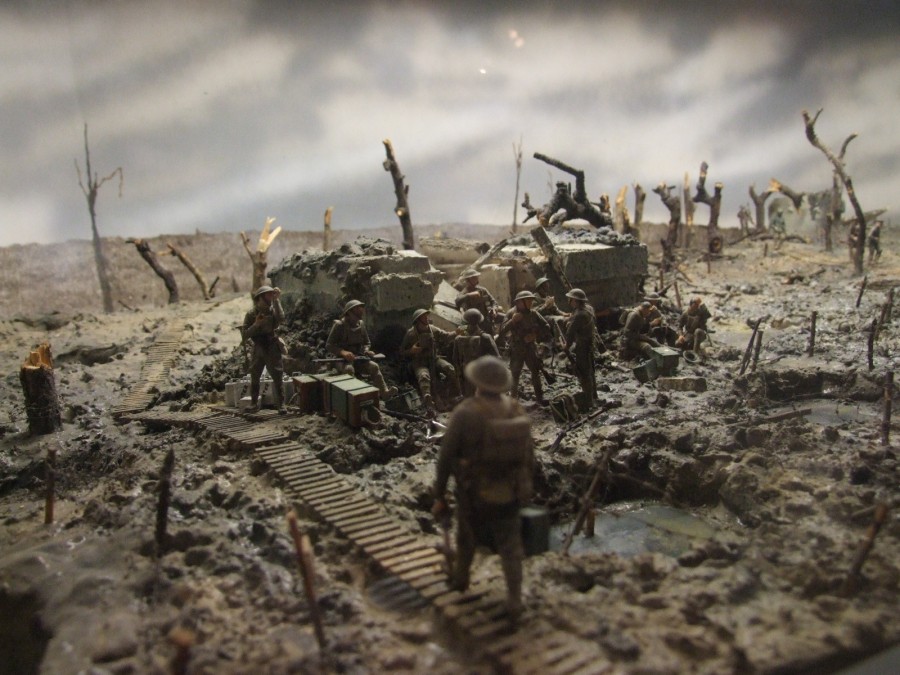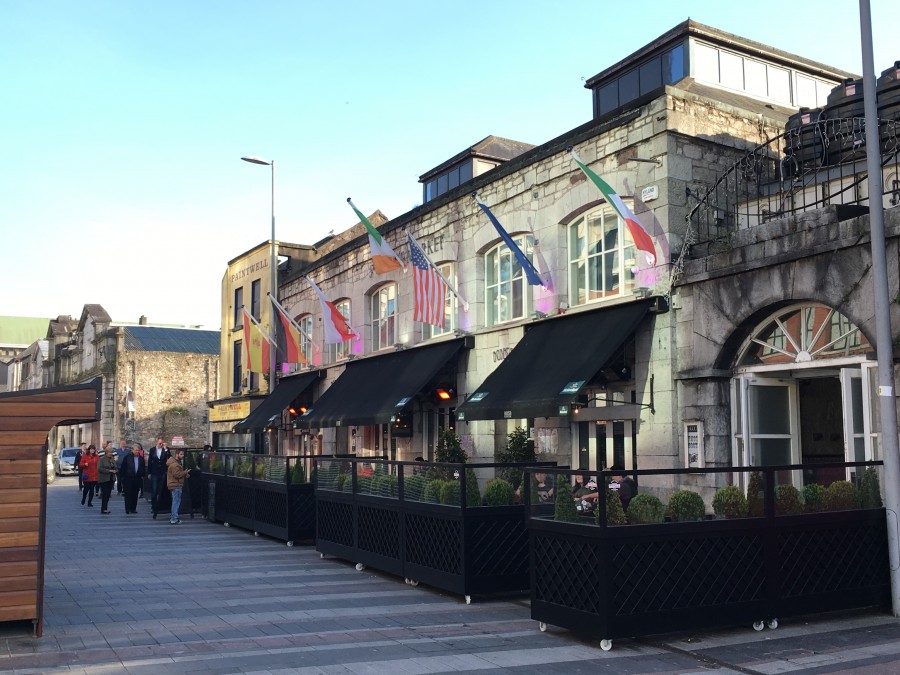Kieran’s Our City, Our Town Article,
Cork Independent, 12 May 2016
Remembering 1916, The International Mood
Throughout 1916, pages and pages of writing and pictures are given throughout Irish newspapers to the tragedies of World War I. There are local Cork people shown in family photographs bound for the war. There are provocative death-ridden pictures of the front lines complete with descriptions of desolation and in depth geographical detail of hills, valleys and rivers spanning from France to Denmark. Views of the trenches, thousands of miles of scarred landscapes, blown up cities, collapsed road networks, burnt out homes, death at every corner – such images echo throughout the newspapers of 1916 and beyond, and stay in the mind long after you have read about them – the trenches are almost metaphors for the entrenched European society of the day – the allies and enemy not backing down – who will conquer? “Any day now it will end” – such remarks in editorials continuously work into the consciousness of the reader.
The political chessboard is active throughout the year with different perspectives and holding onto power. Physically European culture grasped Cork Harbour and the Irish channel as they became part of the battlefields of the seas and the fight for the Atlantic and North Sea. The torpedoed Lusitania of 1915 and the scuttled ship the Aud of 1916 haunted such maritime spaces – the presence of the other, the unknown enemy – in a submarine – waiting to take its chance and maim, sitting there on the ocean bed.
The daily published lists of deaths and the honours bestowed on participants glorify and construct a raison d’être for being on the front line. The naming of dead Corkmen and the families they left behind – the quests by the soul of city to be part of it – whether it was through the thousands of tons of Lambkins tobacco sent to the front line, to the picture shows of the war in the Palace Theatre and Cork Opera House – or even the regular flag days in support of the Red Cross and the Royal Munster Fusiliers (approx. 48 officers and over a 1,000 men). Then there were the conversations throughout the year about attaining a munitions factory for Cork – the empty shells almost standing in as metaphors for the empty promises of waiting for it – to provide jobs for those who did not go to fight on the masculine territory of the front line. The role of equality amongst the sexes features prominently – the men who went off to fight in the war versus the women in Cork who have stayed to put weaponry together, fundraise, volunteer at the Red Cross, engage in the quest for women’s votes, and in campaigning for women’s places as junior doctors in Cork hospitals – these are also discussion points as the year progresses.
On 18 May 1916, the Cork Examiner ran the story of the German placards placed on the front questioning the Irish holding the line in light of the 1916 rising. Private Dave O’Mahony, Macroom, attached to the Signal Corps of the Royal Munster Fusiliers, which formed part of the Irish Brigade, arrived home on leave from the trenches. Of the fighting generally, he noted it is of the “tricky kind, confined almost entirely to explosives. There is no open fighting, and that does not at all suit the men of the Munsters, who often long for an open hand-to-hand fight with the Germans”. Gas was the one death-dealing element they dreaded most. Just about Easter 1916, the gas attacks, which had ceased for a period of six months, were re-initiated by the Germans. The result of the attacks were disastrous; “It seems to me,” said Private O’Mahony, “that the Dublins and Inniskillings must have been caught unawares, because rats and mice, which are very prevalent, were to be seen turned up-side down, some of them quivering in their death agony”. When the wind is from a certain point all the men donned their masks, and at the first warning they pulled them over their faces to keep out the deadly fumes.
Private O’Mahony heard of the Dublin 1916 and deemed it a great shock to himself and his fellow comrades on the front. Things were unpleasant enough with the high casualty level around them. On one of those days the Germans placed out two boards on their parapet. One bore the news of General Townshend’s capture at Kut, with 30,000 men. Another had this query: ‘Irishmen, why will you fight for England while they are shooting your wives and sisters in Dublin’. Captain Larry Roche made up his mind that the ‘G’ Company should bring in these boards. He sent out some of his men, but the danger was too great, and they had to abandon their task. “Still there were men amongst the Munsters brave enough to take any risk, and who did the trick too. Lieutenant Biggane of Cork City and Corporal Kemp wrapped themselves in sheets of suitable hue, and crawling over the intervening space, with death hanging over them, they reached the enemy parapet and bore away, one each, the annoying placards”.
Captions:
843a. Model of World War 1 trench at Ypres World War 1 museum (picture: Kieran McCarthy)
843b. Former site of St Peter’s Market, Cornmarket Street; in 1916 it became a munitions factory (picture: Kieran McCarthy)

